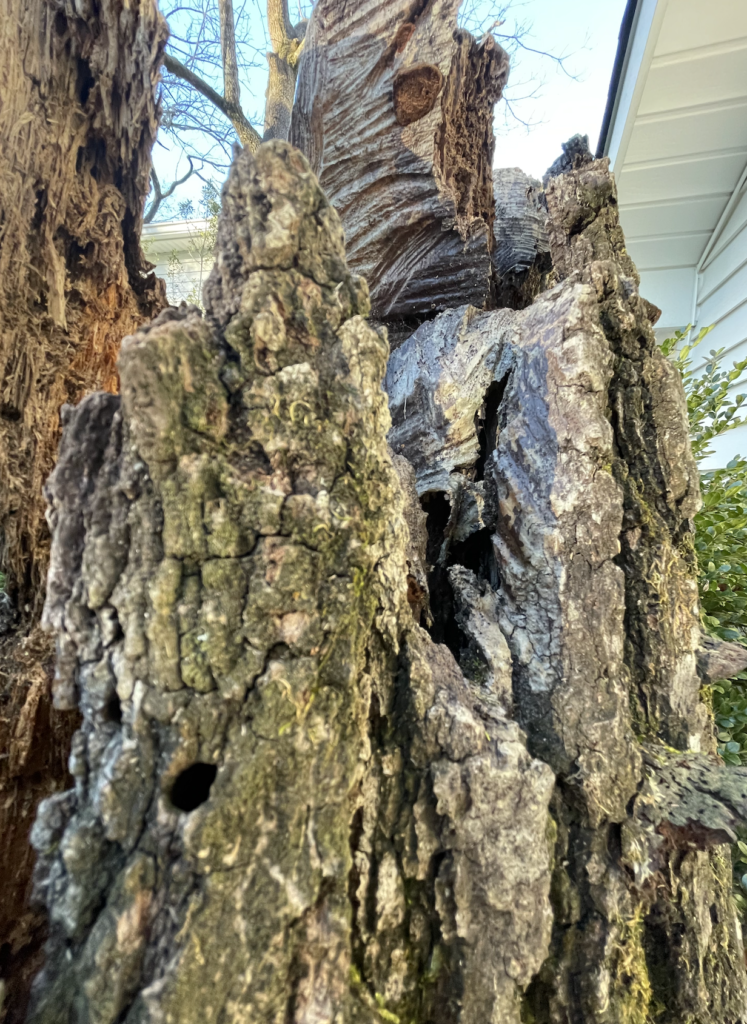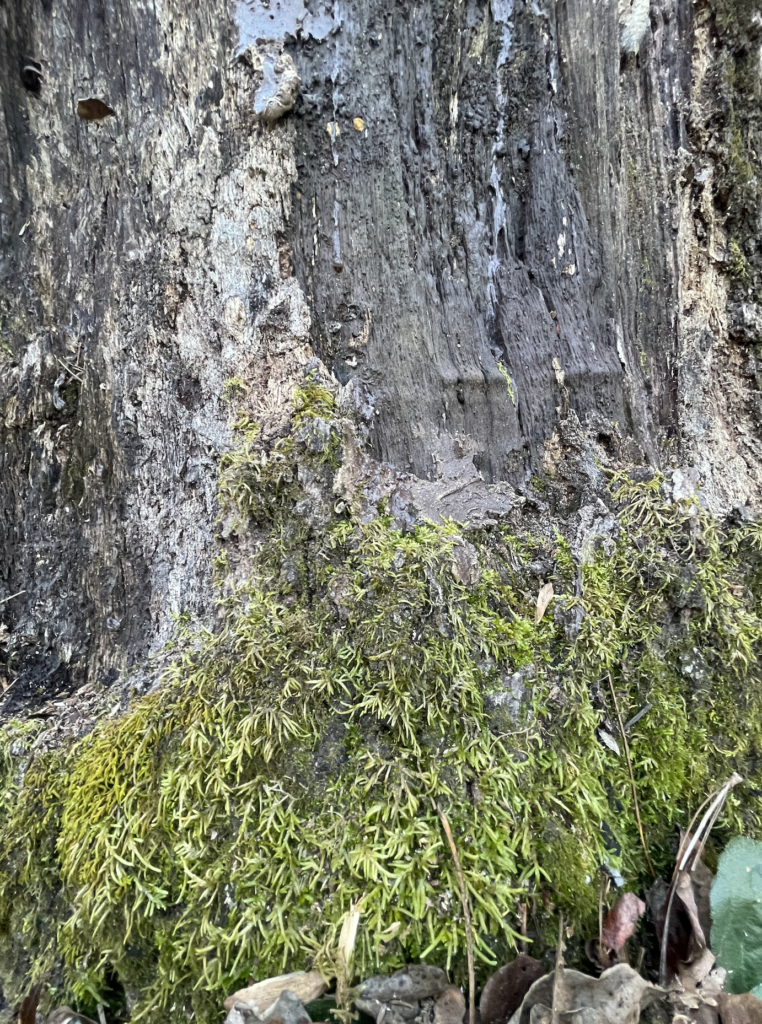Several years ago, Jack and I had to have an old and diseased oak tree taken down. It was growing about a foot away from the back of the house and had it fallen in any direction it would have done serious damage to the house. Heartbroken at destroying this beautiful tree and depriving dozens of organisms their home, we opted to leave a 5 foot tall stump and have it carved into a chair.

The tree chair has been the source of a lot of joy and laughter and has provided a photo op for countless kids. But, like the tree in Shel Silverstein’s classic, The Giving Tree, this tree keeps on giving.
Some of the carvings are still intact but for the most part, the tree is in a state of fabulous, life giving decay. Covered with lichens and moss, there are wide cracks and soft holes in the back and sides. The base is definitely deteriorating and during the warmer months, I was delighted to see an endless stream of insects burrowing into the rich rotted wood. Small, perfectly round holes are proof that something – be it bird or insect – is making a home here.

I can only hope and assume that the tree is full of life, harboring hundreds of insects and microorganisms. The Xerces Society says that long horned beetles, jewel beetles and bark beetles all burrow into dead and decaying wood, creating spaces for cavity nesting insects such as mason bees and leaf cutter bees to lay their eggs. Spiders and other beetles are also attracted to the moisture of decaying wood.

Though our tree stump is both too close to the house and too short to be used by woodpeckers and owls, dead limbs of other trees, farther back into the yard must provide magnificent habitats as both the rat-a-tat-tat of the woodpeckers and the frequent hooting of the barred owl are part of the back yard music.
Two huge oak trees, probably close to 200 year old, are looking a little old and damaged but they are far from any structure and we’re just letting nature take her course. I’m sure, at some point, they will fall but will continue to serve their purpose in the ecosystem.
Nature, on her own, is not neat. Brush piles, dead flower stems, rotted tree stumps are not necessarily “beautiful” but they serve an essential role in the environment, providing food, shelter and nesting sites for countless organisms. Perhaps it’s time that we redefined “beauty” in the landscape.
I cherish the tree stump at my back door and am grateful to this tree for the many, many treasures it has offered during the years. It is truly the gift that keeps on giving.
For more information about creating and maintaining a pollinator friendly landscape, check out the Xerces Society for Invertebrate Conservation at
I hope that you and yours have a happy, happy holiday.
Laura

You do, indeed, redefine beauty and help us see the value in every phase of transformation. You help me move from “Ugh” at the sight of beetles and bees to “Ahh!”